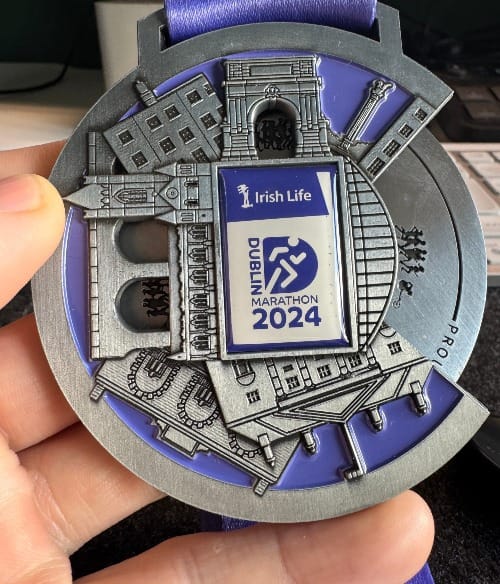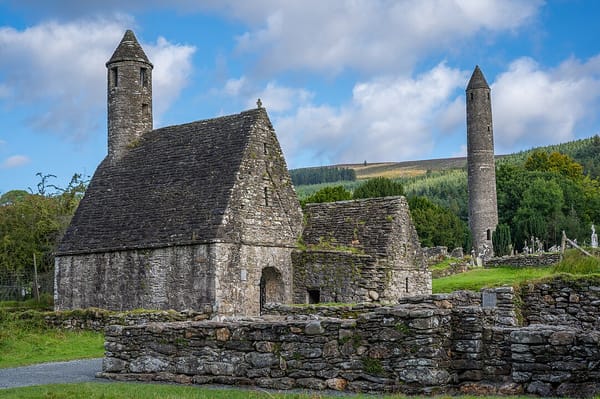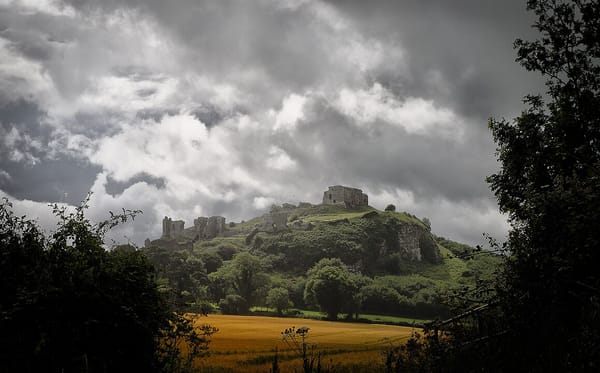Things to Do in Dundalk: Explore This Bustling Border Town
Explore the best things to do in Dundalk, the vibrant border town in Ireland's smallest county. Discover local experiences that showcase the unique charm of County Louth's largest urban center, from historic landmarks to cultural attractions.

Dundalk sits at the northern edge of County Louth, Ireland's smallest county (nicknamed "The Wee County"). Originally a Viking trading post established in the 9th century, the town evolved into a strategic Norman settlement and later became a crucial industrial center during Ireland's economic development.
Unlike many Leinster towns that developed around ecclesiastical sites, Dundalk's growth was primarily driven by its position as a frontier town on the historically significant border between Ulster and the Pale.
The town's name, derived from Dún Dealgan (Dealgan's Fort), connects it to the legendary Cú Chulainn, who according to Irish mythology was born and raised in the area. This connection to Ireland's most famous mythological hero gives Dundalk a unique cultural heritage that distinguishes it from other towns in the region.
Dundalk Attractions
Carlingford Lough Ferry
This 15-minute ferry crossing offers breathtaking views of Carlingford Lough and the Mourne Mountains. While technically departing from Greenore (15 minutes east of Dundalk), it's a must-do for visitors to the area.
Carlingford Lough Ferry operates year-round but is most enjoyable from April to September. Allow 2-3 hours for the round trip including some exploration time in Greencastle on the Northern Ireland side. Unlike the busy Dublin Bay cruises, this crossing offers a more peaceful experience with equally impressive scenery.
County Museum Dundalk
Housed in a restored 18th-century warehouse, this museum tells the story of Dundalk's industrial and social history. The collection includes artifacts from the town's railway, brewing, and manufacturing past. Budget 1-2 hours for a thorough visit. Best times are weekday mornings when school groups are less likely to visit. The museum's industrial focus provides a different perspective compared to the more medieval-focused museums in Kilkenny or Trim.
Cuchulainn's Castle (Castle Roche)
The dramatic ruins of this 13th-century Norman castle sit atop a rocky outcrop about 10km northwest of Dundalk. The site offers panoramic views of the surrounding countryside and has a fascinating (if gruesome) history involving a bride being thrown from the castle walls.
Allow 1 hour to explore. Early mornings provide the best light for photography. While Trim Castle in Meath may be larger and better preserved, Castle Roche offers a more atmospheric and less crowded experience.
St. Patrick's Cathedral
This impressive Gothic Revival cathedral was completed in 1835 and features stunning stained glass windows and an ornate interior. The 86-meter spire is visible throughout the town. Allow 30-45 minutes for a visit, and try to avoid mass times unless attending a service. Unlike Christ Church Cathedral in Dublin, St. Patrick's in Dundalk maintains a more local community feel while still offering impressive architecture.
Dundalk Stadium
Ireland's only all-weather horse and greyhound racing venue offers a unique dual-purpose racing experience. Racing takes place year-round, with special events and festivals throughout the calendar. Evening meetings typically last 3-4 hours. The facility is more modern than many of Ireland's historic racecourses like Curragh in Kildare, offering excellent visibility and comfortable amenities regardless of weather.
Proleek Dolmen
This impressive prehistoric portal tomb in the grounds of Ballymascanlon Hotel dates back over 5,000 years. The massive capstone, weighing over 40 tons, sits precariously balanced on three upright stones. A visit takes about 30 minutes. Early mornings or evenings provide the best lighting for photographs. While Brownshill Dolmen in Carlow may have a larger capstone, Proleek's woodland setting creates a more mysterious atmosphere.
Hidden Dundalk Gems
Ravensdale Forest
This mature forest at the foot of the Cooley Mountains offers several walking trails ranging from 1.5km to 9km. Locals know to look for the "Money Tree" – an old beech with coins pressed into its bark where generations of Dundalk residents have made wishes. The forest was once part of the estate of the Barons Clermont, and you can still sport some ruins of estate buildings spotted among the trees.
Stephenstown Pond
This nature park and tea room just outside Dundalk was created from the remnants of the Stephenstown Estate. The pond was built as a reservoir for the estate's water-powered mill. Many Dundalk families remember when local farmer Tom McCreesh restored the abandoned site in the 1990s as a labor of love, creating a beloved community space.
Spirit Store
This harbourside pub hosts some of the best live music in the Northeast in its upstairs venue. While tourists might stumble upon larger venues, locals know that many famous Irish musicians including Hozier and Lisa O'Neill have played intimate gigs here before achieving wider fame. The owner, Derek, has legendary status in Dundalk's music scene and often has stories about early performances from now-famous artists.
St Nicholas' Church (Green Church)
The distinctive green spire of this church makes it a Dundalk landmark. Built in 1860, it contains an unusual wooden gallery that runs around three sides of the interior. Few visitors know that during restoration work in the 1980s, workers discovered messages and signatures from the original 19th-century craftsmen hidden in the church woodwork.
Event Calendar
Spring
Dundalk Agricultural Show (April) - This traditional agricultural show features livestock competitions, craft displays, and farm machinery exhibits. Held at Dundalk Institute of Technology grounds, it brings together the rural communities surrounding Dundalk.
Louth Contemporary Music Festival (May) - This avant-garde music festival brings international composers and performers to Dundalk, with performances held in various venues around town including St. Nicholas' Church and An Táin Arts Centre.
Summer
Táin March Festival (June) - This festival recreates the epic journey of Queen Maeve's army from Roscommon to Cooley in pursuit of the famous brown bull from Irish mythology. The march culminates in Dundalk with reenactments, traditional music, and family activities.
Dundalk Summer Festival (July) - This week-long festival includes street performances, music events, and a significant maritime component with sailing races and demonstrations on Dundalk Bay.
Autumn
Dundalk Frostival (November) - This relatively new addition to Dundalk's festival calendar brings winter wonderland themes to the town center with ice sculptures, light displays, and seasonal markets in preparation for Christmas.
Cooley Whiskey Festival (October) - Celebrating the region's distilling heritage, this festival features tastings, masterclasses, and food pairings at venues throughout Dundalk and the Cooley Peninsula.
Winter
Christmas Market (December) - Dundalk's Market Square transforms into a traditional Christmas market with craft stalls, food vendors, and entertainment throughout December.
Brigid of Faughart Festival (Jauary/February) - This festival celebrates St. Brigid, one of Ireland's patron saints, who according to tradition was born in Faughart just north of Dundalk. It includes pilgrimages to Brigid's shrine, workshops on Brigid's crosses, and lectures on Celtic spirituality.
Family Activities
County Museum Dundalk
The museum offers regular hands-on history workshops for children during school holidays. Kids can try their hand at archaeological digs, medieval crafts, or Victorian-era activities. Suitable for ages 6-12.
Dundalk Leisure Centre
The leisure centre offers a 25m swimming pool for rainy days with a separate children's pool featuring water features and a slide. The centre also has family swim sessions and swimming lessons for all ages.
Local Dundalk Business Highlights
The Spotted Dog
This gastropub in the town center offers a contemporary take on traditional Irish dishes. The Spotted Dog signature slow-cooked beef and Cooley whiskey casserole uses locally sourced ingredients and whiskey from the nearby Cooley Distillery. The Sunday lunch is particularly popular with locals.
Square Restaurant
Located in Market Square, this restaurant specializes in locally caught seafood from Carlingford Lough. Their signature dish is the Seafood Platter featuring oysters, mussels, smoked salmon, and prawns from the local waters. The rear courtyard is a hidden sun trap perfect for outdoor dining in summer months.
McAteers The Food House
This bakery and food shop is famous for its "Wee County Tart" – a pastry case filled with bourbon-soaked raisins, topped with caramel and a chocolate ganache. The recipe was created to celebrate Louth's status as Ireland's smallest county.
Roe River Books
This independent bookshop specializes in local interest publications and works by authors from the northeast. The owner, Brian, is a fountain of knowledge on local history and regularly hosts book launches and reading groups focusing on northeastern writers.
Visit Dundalk
Dundalk's position as a border town has shaped its distinct character – part Ulster, part Leinster, and wholly unique. From mythological connections to industrial heritage, championship racing to ancient monuments, the town offers visitors diverse experiences beyond typical tourist trails.
Whether you're exploring the dramatic landscape of the Cooley Peninsula, delving into the area's rich history, or simply enjoying the local food and entertainment scene, Dundalk rewards those willing to explore with authentic experiences and warm hospitality.
Check out our guide about things to do in Drogheda.




